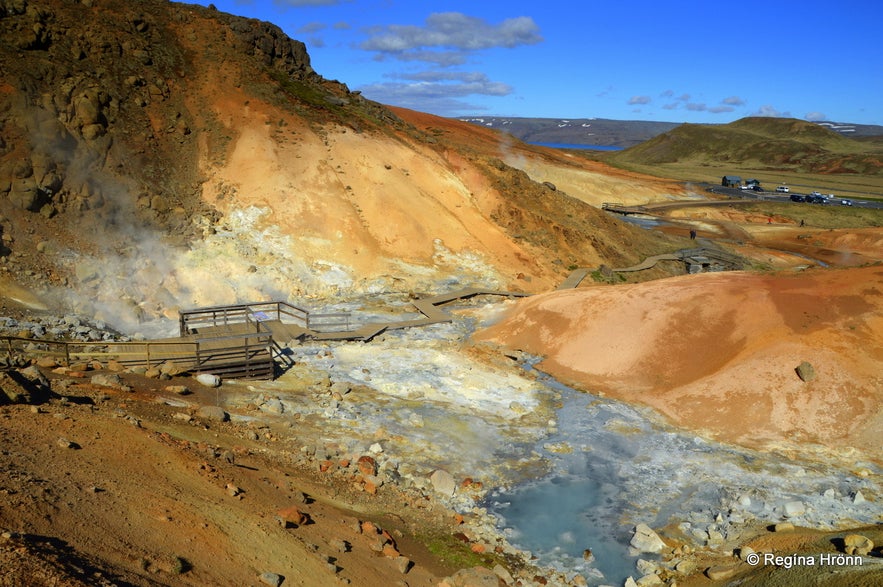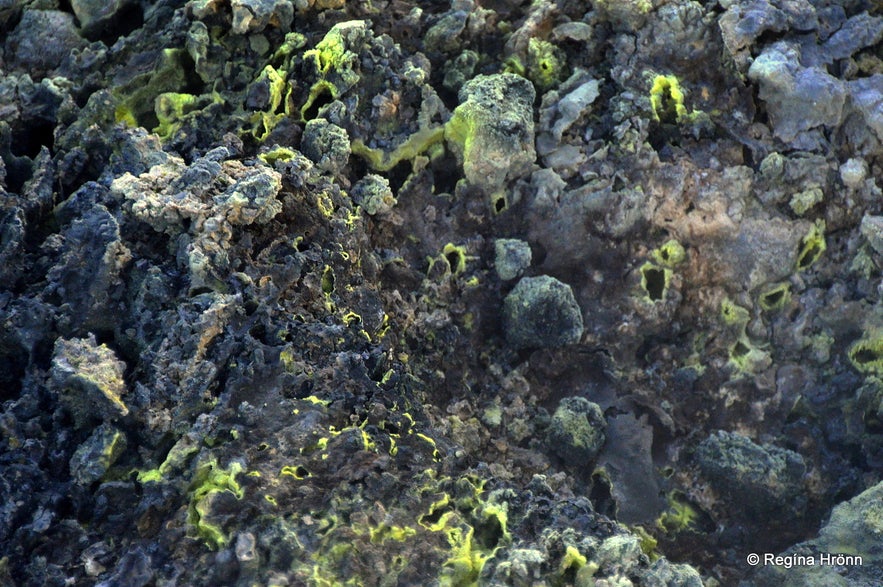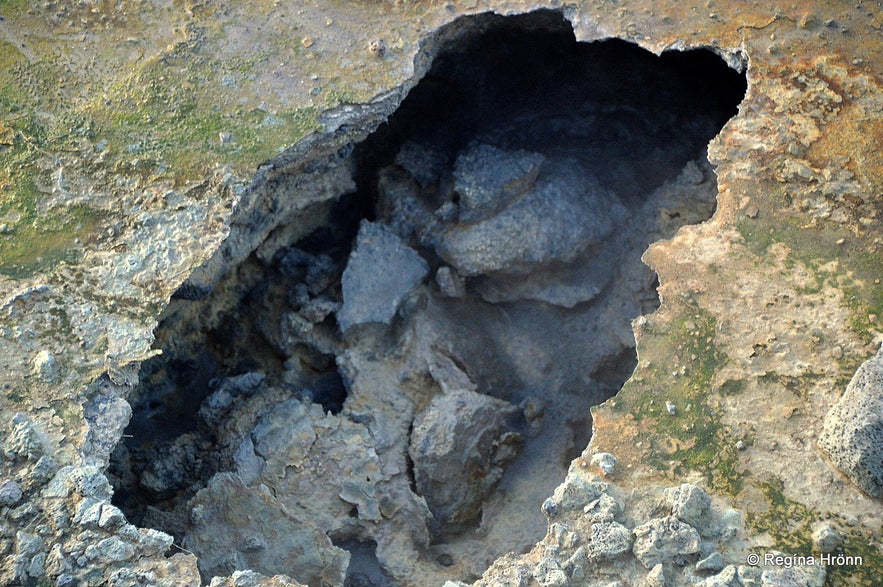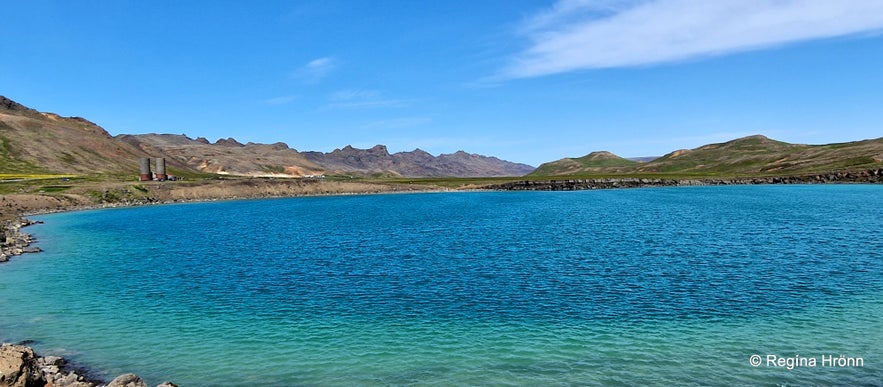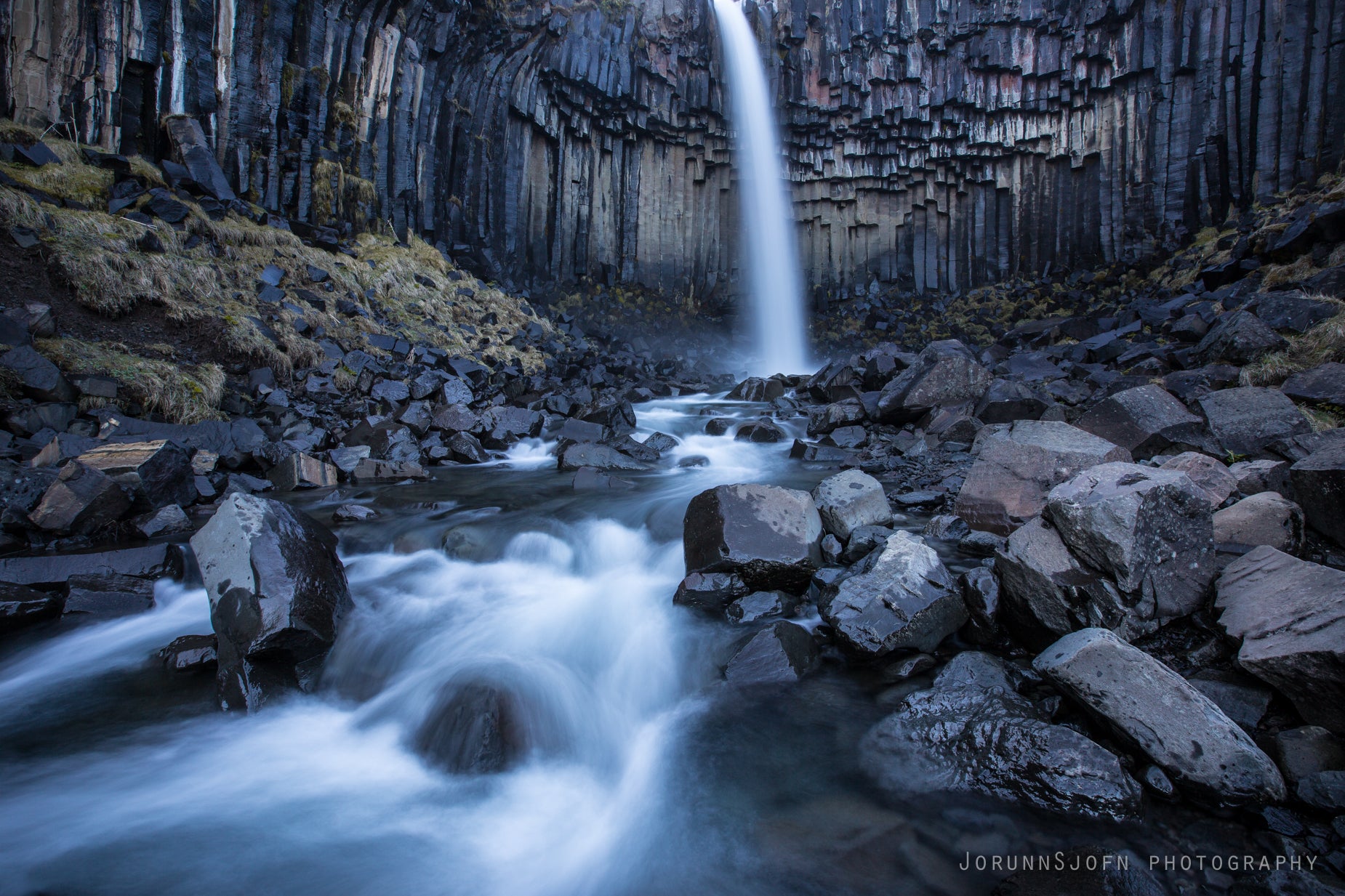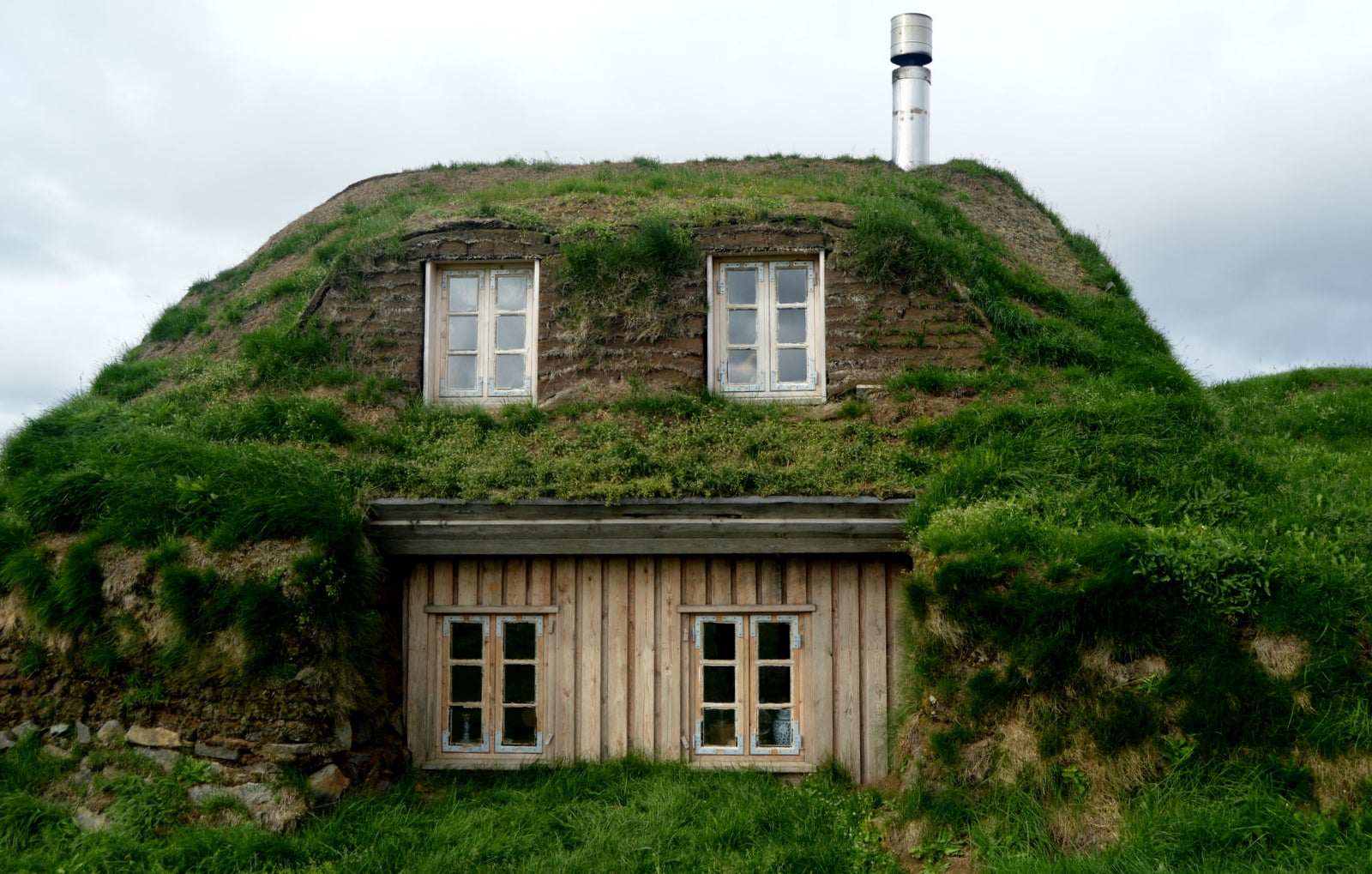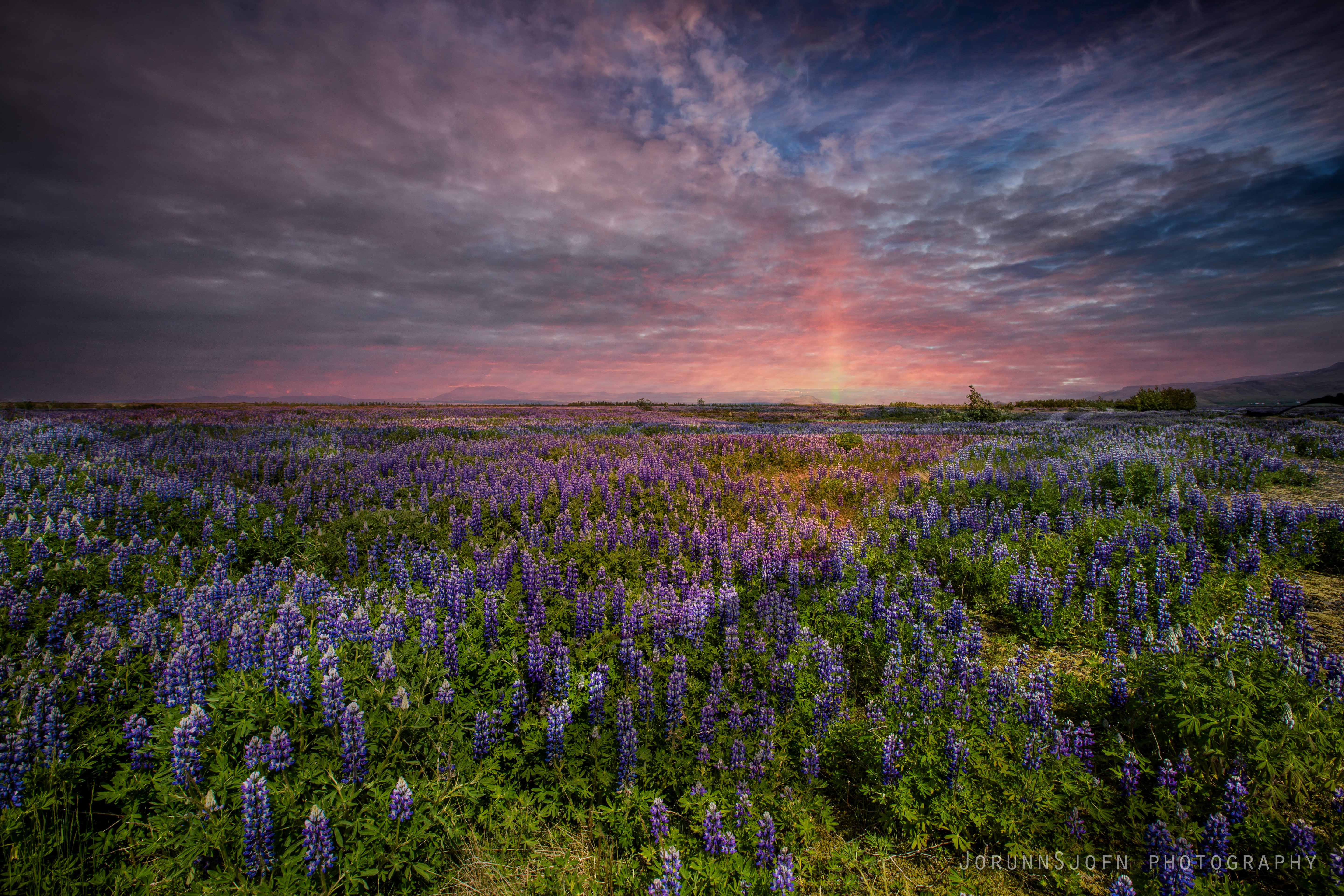You don't have to go far from Reykjavík to see colourful geothermal areas. I have already told you about the Hengill geothermal area in a previous travel-blog, which is only half an hour's drive from the capital city.
Another colourful geothermal area is Seltún, which is located beneath Sveifluháls, on the Reykjanesskagi peninsula in SW Iceland. Seltún is located some 40 km away from Reykjavík.
Top photo: boiling mud pools at Seltún geothermal area
Seltún geothermal area
This interesting geothermal area has got two names; it is either called Seltúnshverir (the hot springs at Seltún) or Krýsuvíkurhverir (the hot springs at Krýsuvík).
The hot springs and mud pools are right by the road, making this geothermal area very easily accessible.
Once you arrive, you can leave your car at the car park and hike up to the mountains by Seltún.
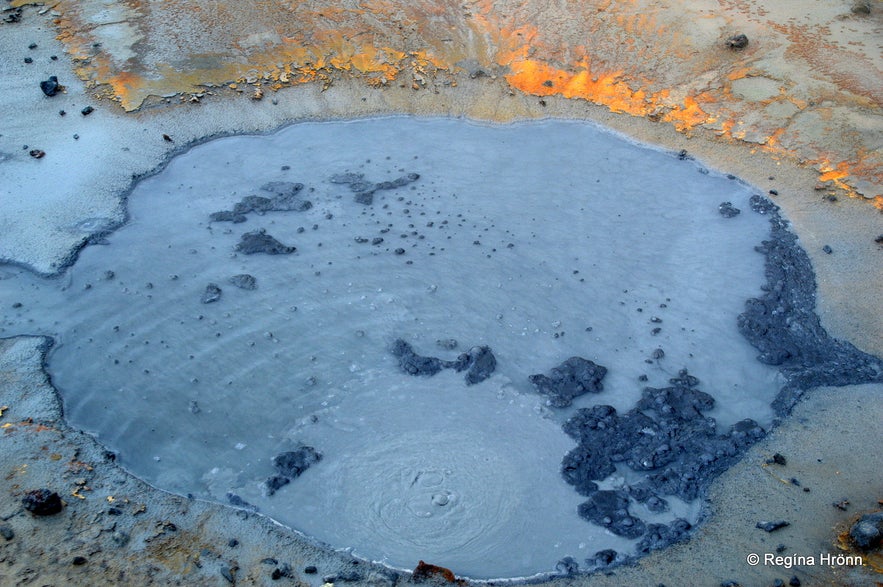
Seltún geothermal area - I love this photo :)
I have only been as far as the upper platform of the geothermal area though. The area is relatively big with wooden paths and 2 viewing platforms from which you can get a fantastic look at the multi-coloured geothermal area.
Like all the geothermal areas in Iceland, visiting Seltùn is like stepping into another dimension. At Seltún you will see both solfataras and fumaroles, aka; bubbling mud pools and steaming hot springs.
Seltún geothermal area - the yellow colour is sulphur
The mud pools all around you are simmering and boiling, hissing through vents in the mud.
The colours in this area range from different nuances of red, grey, brown, silver, blue, and yellow to white - all in one area! - with steam rising up in the air, adding to the mystery of this place.
Be careful though as there is no railing on the path.
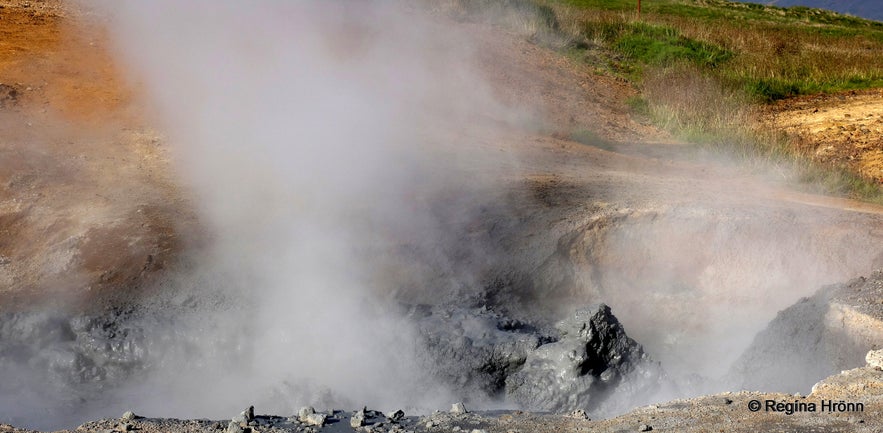 A mud pool throwing hot mud in the air
A mud pool throwing hot mud in the air
There is no describing what nature offers us in geothermal areas; you just have to see it for yourself. I often take my foreign guests to Seltún as it is so close to Reykjavík, and they always love the experience.
You don't have to drive long distances to see beautiful nature in Iceland.
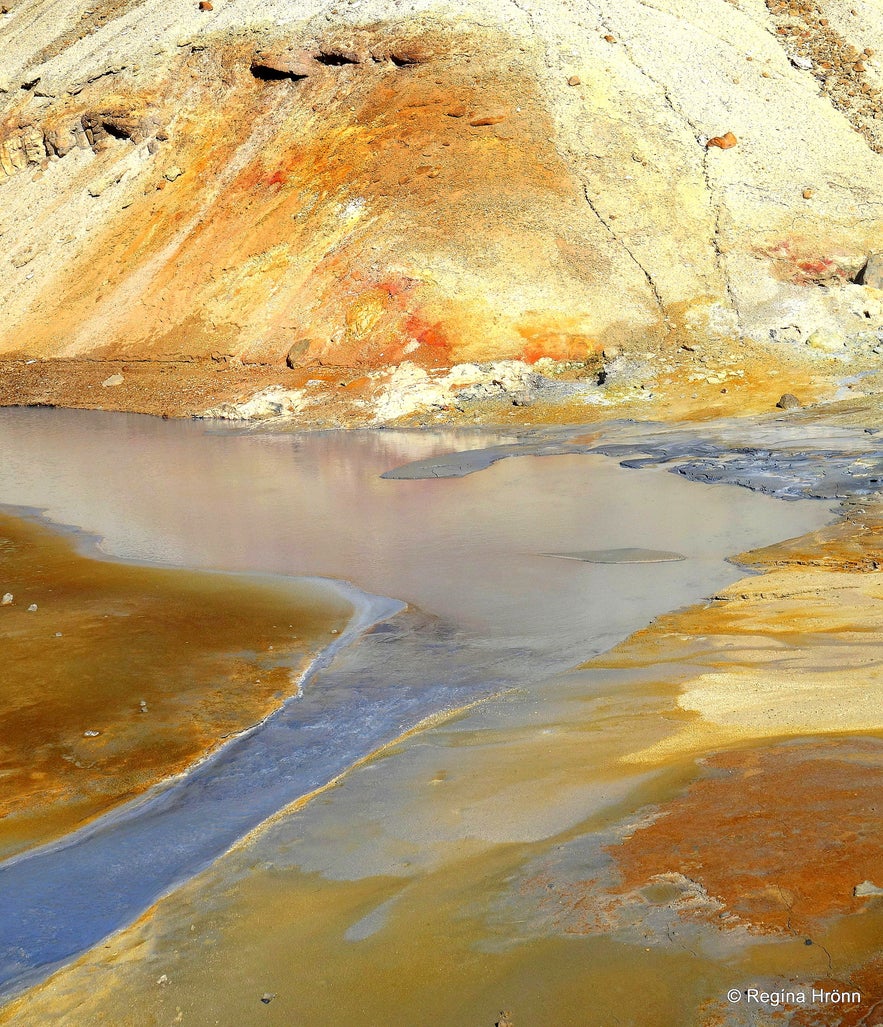 Orange and yellow colours at Seltún geothermal area
Orange and yellow colours at Seltún geothermal area
Here you will see the vivid yellow colours of sulphur (sulphating) and all types of orange colours. Notice the details in the yellow colour in my photos - there is so much beauty in the details, and at Seltún you will get some fantastic photo opportunities.
The colours are very vivid in the sunshine, so having the privilege of living relatively close by, I always visit this area when the sun is shining to get some good photos.

Seltún geothermal area - beautiful colours
You will immediately notice the overwhelming stink of sulphur. Take care as sulphur is poisonous, and one can get a nasty headache and nausea if too much of it is inhaled.
There were sulphur mines here until 1880 as sulphur was a popular commodity in the 13th century and onwards.
I added a very short video below, which I shot last year, just to give you the feeling of the serenity of this place:
But it wasn't always this serene, as an explosion took place here on this spot at Seltún on the 25th of October 1999.
A large vent opened in the ground. It was so massive that the coffee shed by Seltún got destroyed.
Luckily nobody was around at the time of the explosion, but some workers had just left the area. They had been putting up signs by the hot spring half an hour before it exploded!
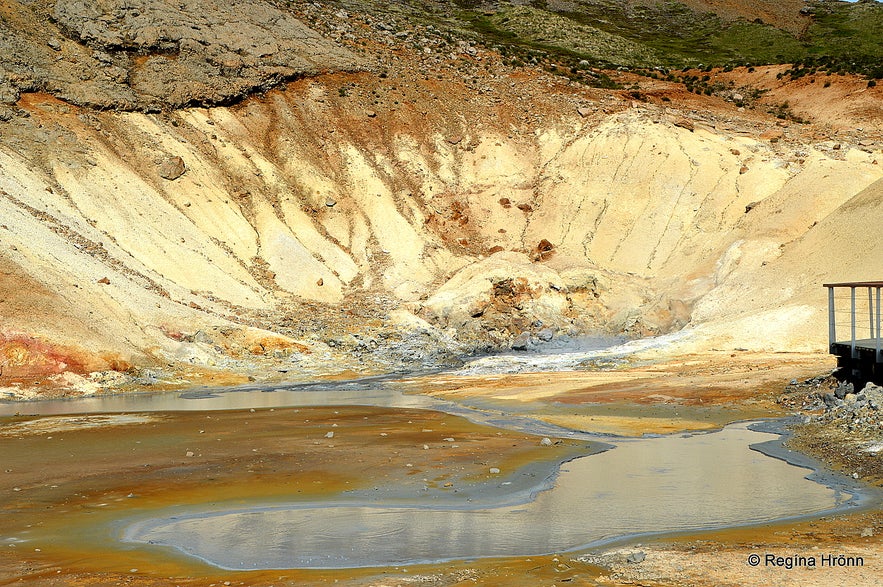
Seltún geothermal area
The explosion is believed to have been caused by the experimental drill hole (KV-14) from 1948-49 being clogged up by deposits.
After the explosion, a pretty pond was created in a beautiful geothermal setting.
Another drill hole (KV-16) at Seltún started spouting hot mud back in 2010. It was closed tightly after the explosion as it is close to the path.

Walking in a semi-circle to avoid the back-then closed-off area
That same drill hole exploded again in February 2019 with the concrete trapdoor flying in the air!
Since February there have been irregular spoutings of hot water and steam. This is dangerous so the path was closed.
Just be warned and aware of the fact that steam explosions can take place here at Seltún and don't enter this area if there is a closed sign on the path.
Only a small area of the path was closed off. When I visited this area in April 2020 this area was open again.
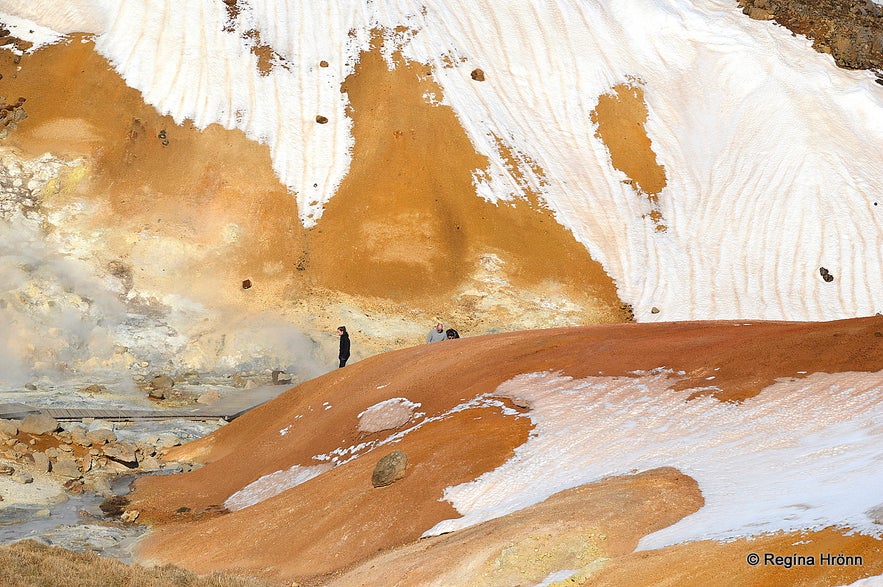
Seltún geothermal area in April
Another word of caution, step carefully here, the pathways are narrow, and when I walk over this boiling area, I always feel that if I were to slide, I would have my foot in a mud pool!
The heat here is 80-100 degrees C, so let us always keep to the marked trails and pathways, and hold on to your children.
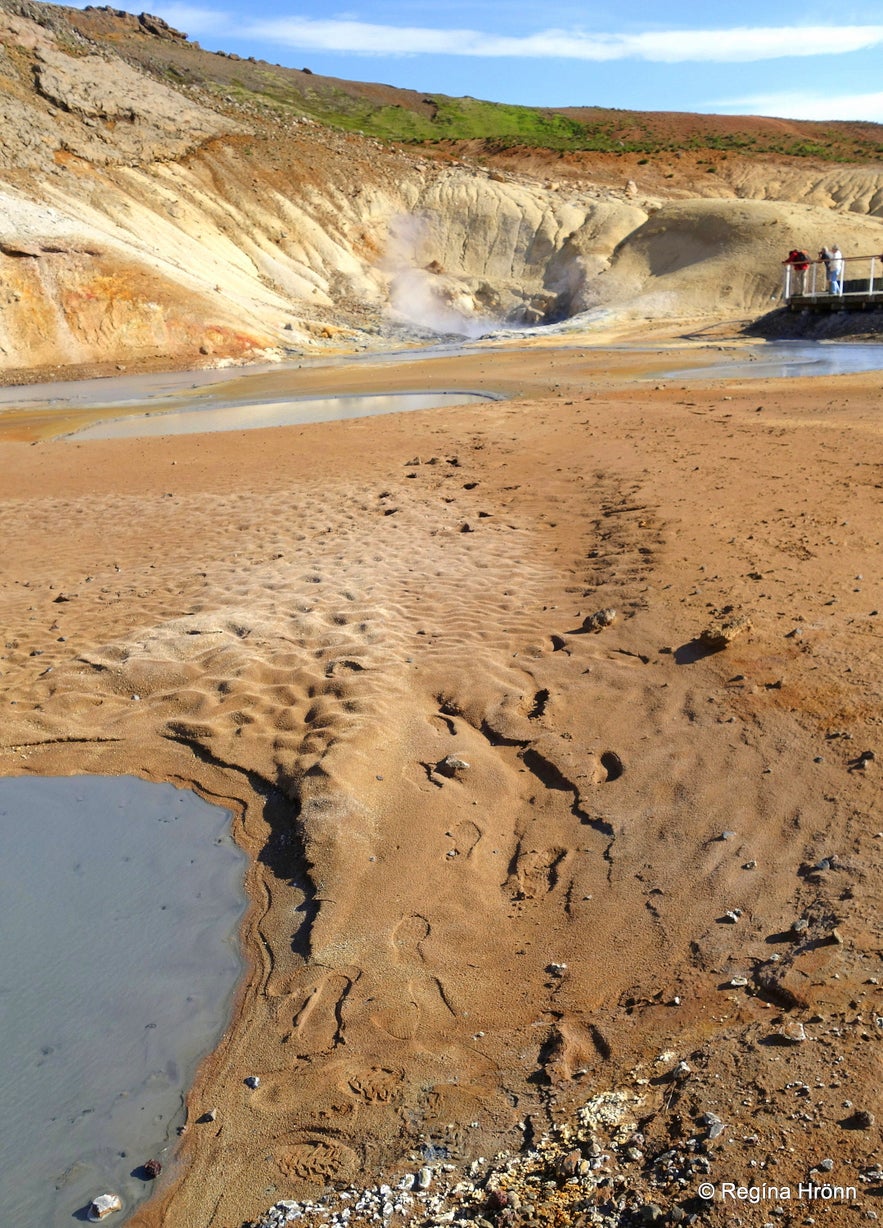 Footsteps inside a fenced-off geothermal area
Footsteps inside a fenced-off geothermal area
A warning sign at Seltún warns us of the danger and advises us to stay on the trails because of stream eruptions and hot springs.
My mother told me that when she was young, she saw a man accidentally stepping into a hot spring. She said that she would never forget how the skin on his foot immediately peeled off due to the immense heat of the water.
So there are some real dangers here and a reason why some areas are fenced-off.
Seltún geothermal area
In my 2 photos above you will see footsteps inside the fenced-off geothermal area! And every time I visit there are footsteps in this location.
Somebody actually stepped inside the boundaries and stepped through the thin crust of the earth! And into the boiling mud beneath!
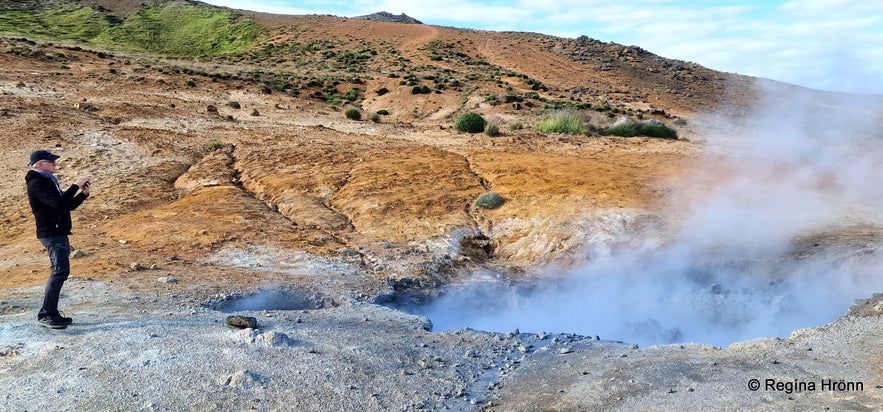 A tourist in a forbidden area
A tourist in a forbidden area
Exactly what I am always warning people against.
I saw footsteps all over the closed-off area... why do people do this?
There are accidents every year in the geothermal areas and I try to warn people who think it is ok to step behind the boundaries or pass the warning signs.
I warned the tourist in my photo above, but he didn't even listen to me.
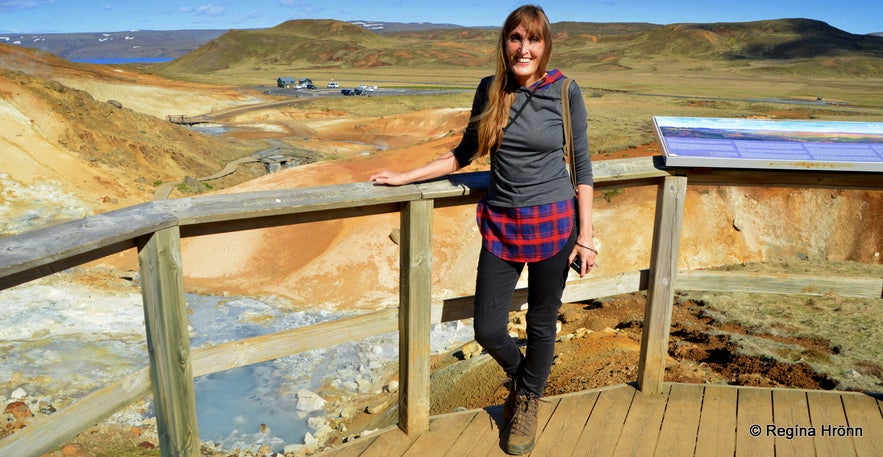
At Seltún geothermal area
We, locals, know about these dangers as we are warned about them from an early age, so respecting these areas comes as second nature to us.
So it is very nerve-racking for us to visit the geothermal areas seeing all this reckless behaviour around us.
But when we travel abroad, we might sometimes behave silly as we don't know the dangers in other countries. So please, follow my local advice and never step inside fenced-off areas.
Colourful Seltún geothermal area
In Mt. Hverafjall above Seltún geothermal area, you will find the hot spring with the strange name Pínir. My husband hiked up the mountain and checked it out.
Little did we know that a big earthquake was on the way in this area!
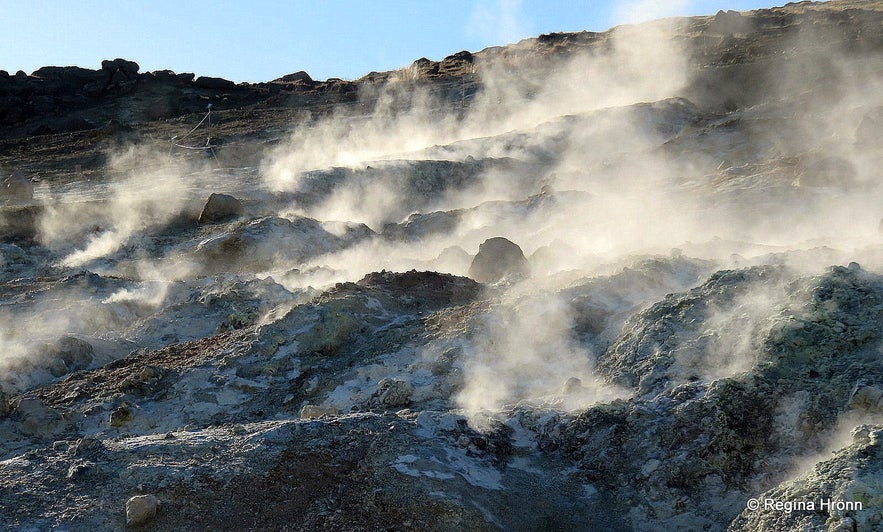
The hot spring Pínir in Mt. Hverafjall
We spent the whole day on the Reykjanesskagi peninsula and the following day, the 20th of October 2020, an earthquake of 5.6 on the Richter scale shook this area with big boulders tumbling down onto the road by Vigdísarvellir where we had driven just a few hours before the earthquake!
Thousands of earthquakes later, which were driving those of us, who live in the SW corner of Iceland, crazy, the Volcanic Eruption in Fagradalsfjall and Geldingadalir started.
And since then we have had 3 eruptions.
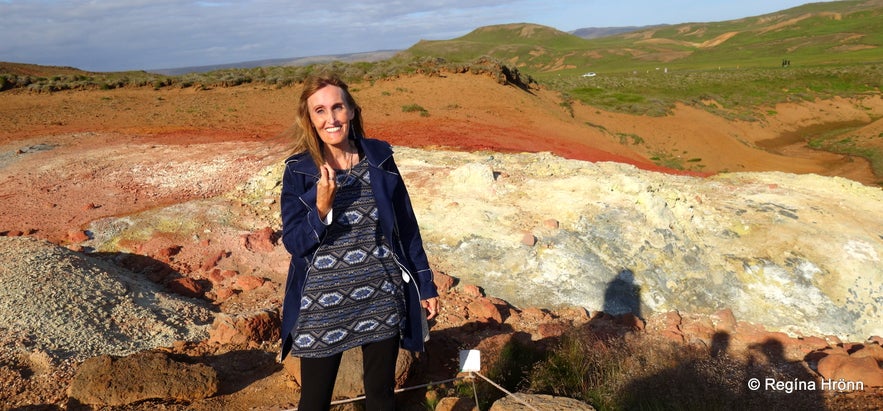 At 19:00 in July, the sun was exactly in the right position for taking photos of this part of Seltún
At 19:00 in July, the sun was exactly in the right position for taking photos of this part of Seltún
Seltún-Krýsuvík geothermal area is only some 40 km away from the capital city.
You can rent a car in Reykjavík and reach Seltún geothermal area in 35 minutes.
Fúlipollur - Foul-smelling puddle
Fúlipollur
On the east side of the road by Seltún, you will find two big mud pools. They are called Fúlipollur or "Foul smelling puddle" as they stink of sulphur.
Fúlipollur looks like a bottomless pool filled with boiling brimstone.
The level of mud in the pool varies and I have photos from my visit back in 2013, where there is very little mud in the pool.
 Fúlipollur on a sunny day
Fúlipollur on a sunny day
I find it amazing how the grassy landscape can all of a sudden turn into a geothermal mud pool area, with two big boiling holes in the ground.
The explosion crater Grænavatn
Grænavatn explosion crater
A short distance from Seltún geothermal area you will find the explosion crater Grænavatn - "Green Lake".
The lake, which is 46 metres deep, gets this beautiful green colour from the crystals and hot spring algae in the lake.
I always stop by the lake just to see what it looks like; sometimes it is green and sometimes it is blue as the colour varies from day to day.
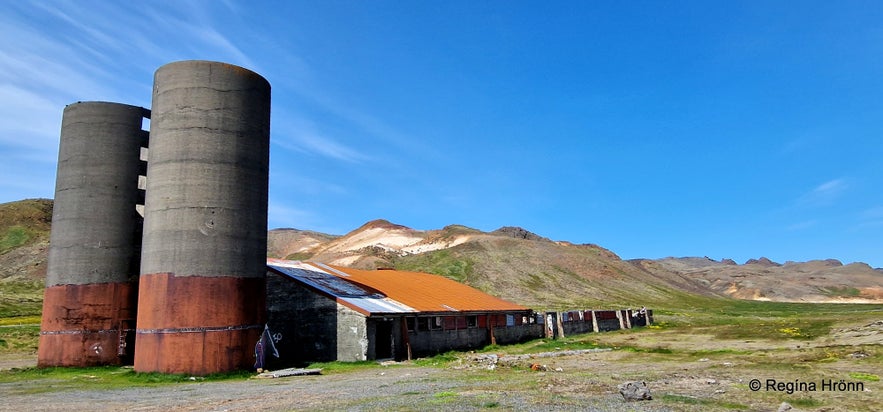
The two silos for hay
Close to Grænavatn, you will notice two silos for hay (silage). There were plans for opening a dairy farm at Krýsuvíkurbú farm back in the 1950s, but it never opened due to various reasons.
Very close to the Grænavatn crater you will find the new Krýsuvíkurkirkja church, which was erected In 2020, i.e. it was moved on a truck to the old church site.
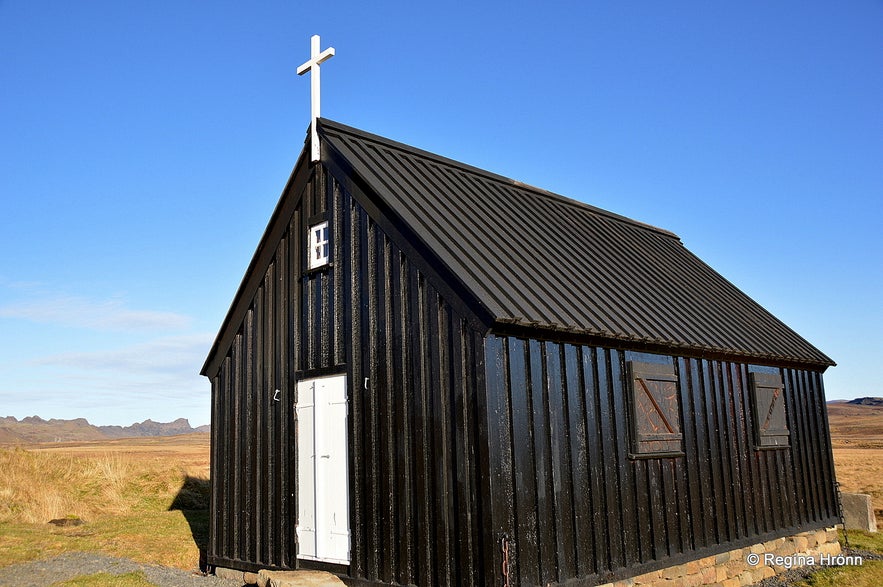
Krýsuvíkurkirkja church
The old church, which was built in 1857 and belonged to the National Museum of Iceland, burnt to the ground in January 2010. I am so glad that it was remade and is now in its old place.
It was sad visiting the old church site and only seeing the foundation of the church.
You can now drive further on and visit all the interesting sights on the Reykjanesskagi Peninsula.
One of them is Brimketill. There is no bathing in the cold Brimketill for obvious reasons
I have added my video of Brimketill just to give you a preview of what the Reykjanesskagi peninsula has to offer.
You can visit this area on a guided tour or on your own. You can rent a car in Reykjavík or Keflavík, and go on a lovely day trip with a rewarding dip in the Blue Lagoon at the end of the day.
The circle around the peninsula is called the Blue Diamond Circle, with the Blue Lagoon giving a name to that circle.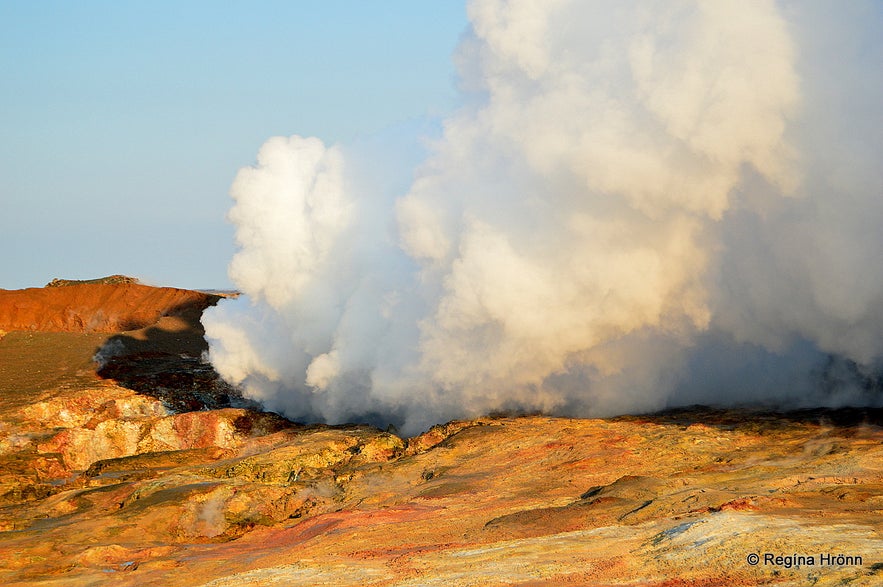
Gunnuhver hot spring
My next travel-blog is on the haunted Gunnuhver geothermal area on the Reykjanes peninsula, where you will find Iceland's biggest geothermal mud pool.
I have also written a travel-blog about a Beautiful sunset at Eldvörp Row of Craters on the Reykjanes Peninsula in SW Iceland.
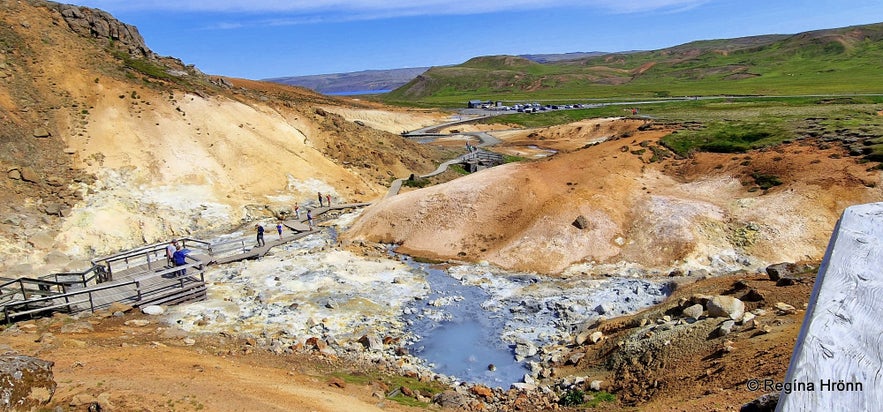 Seltún geothermal area
Seltún geothermal area
Here is the location of the Seltún geothermal area on Google maps.


